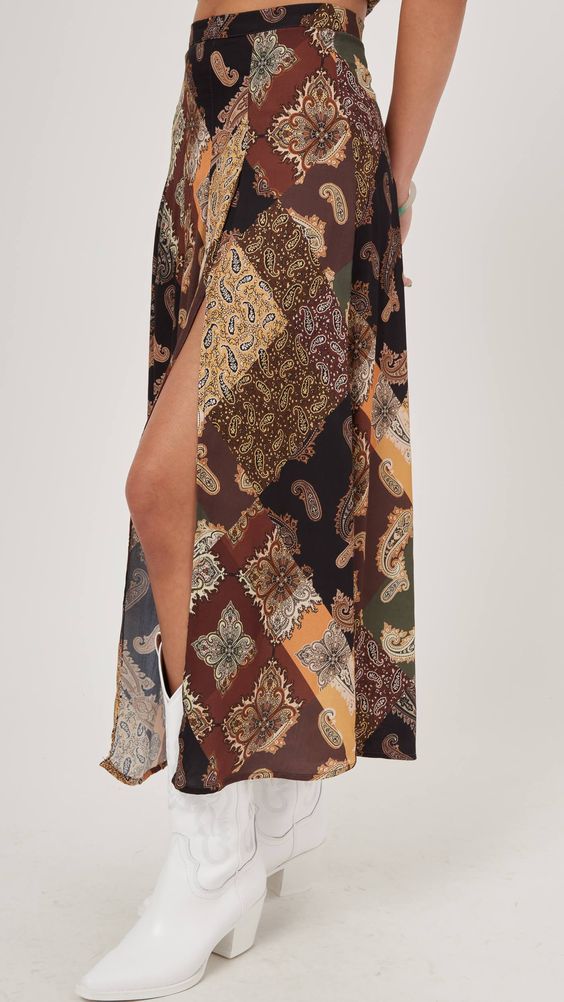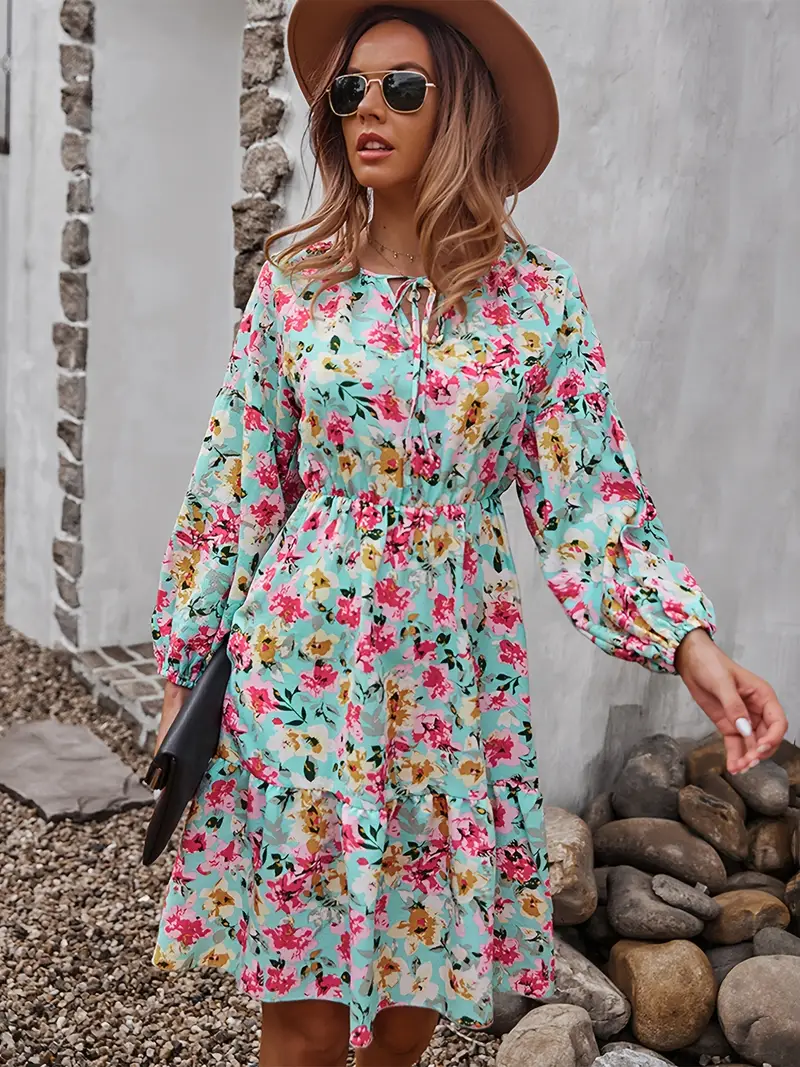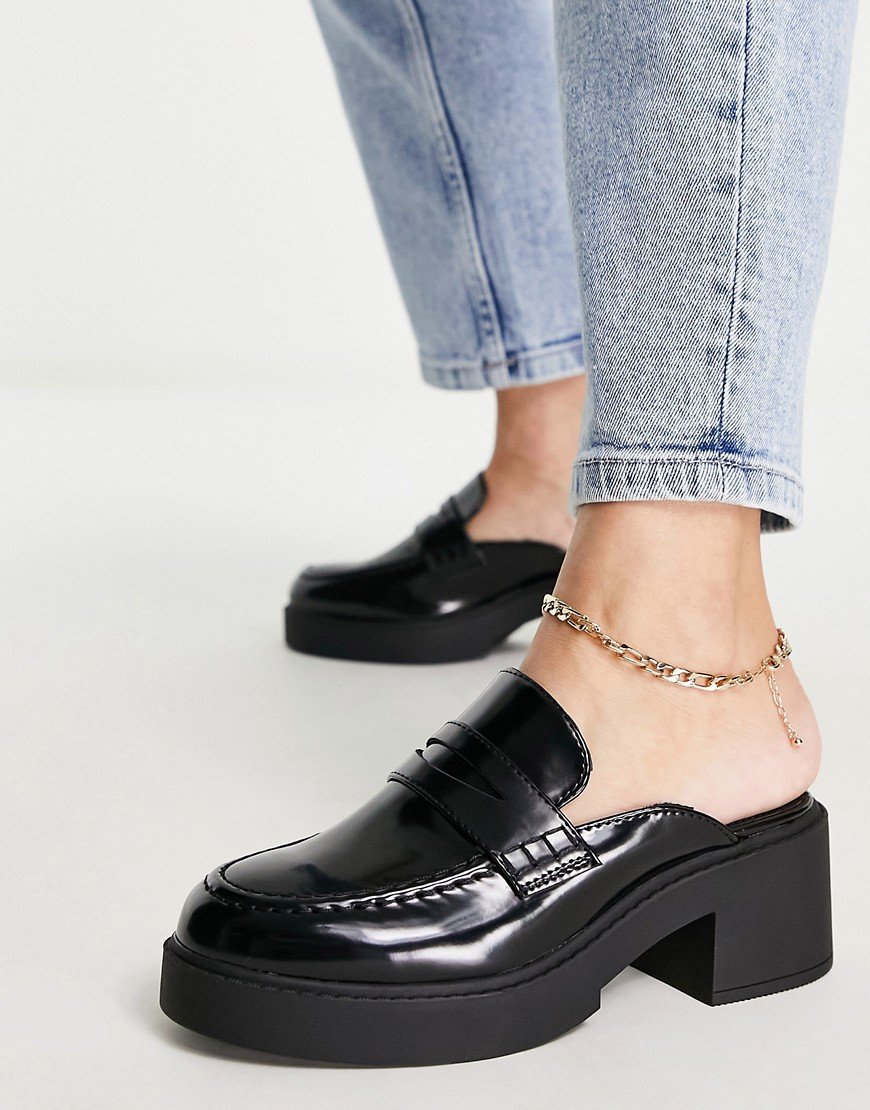
How has the paisley pattern been accompanying fashion over 2,000 years
Often referred to as the cashmere pattern, the paisley pattern, by its other name, has been following fashion trends for decades. First a sign of nobility and elegance, then an emblem of the psychedelic looks of the hippie years, and now present on sneakers, this pattern is revealed to be timeless. Having traveled from one end of the world to the other, from the villagers of the Kashmir region to American gangs, let’s explore the rich history of one of the most popular patterns in ready-to-wear!
How did the paisley pattern spread worldwide?
Researchers would place the birth of the paisley pattern in the Sassanian Empire, a Persian dynasty present from 224 to 651 AD. Created over 2000 years ago, it is said to have originated on the Indo-Pakistani and Iranian border, near the Kashmir region.
The transmission of the pattern in Asia
Initially religious, the pattern was present on royal shawls during the 16th century. With the fall of this empire, the pattern moved away from its religious connotation to decorate gemstone settings, carpets, and curtains.


Thanks to the Silk Road, the pattern spread to Asia. Weavers gradually adapted it to their own culture by making pashminas decorated with the pattern using the hair of Tibetan goats. Truly incorporated into clothing in the 17th century, the pattern mainly appeared on shawls, offering pieces that became increasingly adorned with the pattern.
The journey of the pattern to the West
The 17th century marked the beginning of the exportation of the pattern, with shawls being offered as gifts by Kashmiri princes to European officers. Another highlight took place thanks to Napoleon’s wife, who began incorporating the pattern into her outfits.
In the late 1700s, the East India Company brought back samples of the pattern that it had discovered. Faced with success, manufacturers found methods to create similar fabrics. However, production quickly proved insufficient to meet the demand for pashminas throughout Europe.
The launch of manufacturing in Europe
With the Napoleonic Wars of the 18th century restricting trade, silk workers found themselves unemployed.
Thus, the idea of launching a factory in Paisley near Edinburgh in 1850 was born. Hiring workers and adapting Jacquard looms, fabrics decorated with the Boteh pattern were created in the Paisley factory, giving the pattern its name. This factory became the largest and exported its pieces throughout Europe.


During the same period, as the pattern was so appreciated and coveted, patents had to be filed, notably by the British government, in order to protect and preserve its production.
From royalty to the Beatles: how did the paisley pattern evolve in fashion?
Initially present in Persian culture, the paisley pattern decorated royal clothing, including crowns. The population of the region then appropriated the pattern, with men being the first to wear it as a pashmina as a belt or turban. Then on their ceremonial shawls from the 17th century onwards. Women, appreciating the elegance of the pattern, also included it in their wardrobes over time.



The paisley pattern gained popularity in the Victorian era when shawls and scarves were highly coveted, becoming staple pieces in women’s wardrobes. The pattern embodied elegance throughout Europe and was also worn as a tie and on pocket squares by men. Symbolizing British masculine elegance, a true trend emerged in the 20th century around the men’s paisley dressing gown, decorated with the paisley pattern.
The pattern evolved over time, adapting to the countries that began manufacturing it in the 17th century. Islamic countries thus created more geometric versions, while Europe approached it with a more rococo style.
The return of the psychedelic paisley pattern
The hippie period of the 1960s played a significant role in the return of the paisley pattern, which had been less prominent since the end of the Victorian era.
Known as the swinging sixties, with its pinnacle being the Summer of Love in 1967, the 1960s are recognizable for their many influences and countercultural movements, particularly their psychedelic aesthetic. Bohemian fashion tastes, with their multiple colors and patterns, found satisfaction in the use of the paisley pattern and its details paying homage to nature and travel.
The world of music, and notably the Beatles, who were heavily influenced by India, which marked a part of their history, particularly with their stay in an Ashram, also contributed to the revival of the pattern. In the image of John Lennon covering his Rolls-Royce with the famous cashmere pattern.


Legendary brands, such as Fender, also reintroduced the paisley pattern by covering their Telecaster guitar with wallpaper featuring the pattern. Prince, following his song Paisley Park, created the Paisley Park Record label and the Paisley Park studios.
The paisley bandana, a symbol of a community
In the 1970s, the paisley pattern played an important role in the gay community, notably through bandanas featuring the pattern. In San Francisco and other cities, colored bandanas were used to indicate one’s sexual orientation by being worn in the back pocket of jeans. Known as the “hanky code” or “bandana code“, the placement and color of the bandana provided information about each person’s preferences. This code has also been extended to the heterosexual community and continues to be used.

The paisley bandana also played an important role in gang wars in America. Used to show affiliation to a group, it is said to have been introduced by the Crips in the 1970s, with the color blue used to identify them. Later, the Bloods wore a red paisley bandana in opposition.
Paisley and blue or tan bandanas also found their place among the Boy Scouts to identify their troop.
Before being used as a sign of attachment to a community, the paisley bandana was notably used by cowboys to protect themselves from dust.
How did the paisley pattern establish itself in the 2000s?
Devoid of any specific meaning, the pattern now enters our wardrobe through various pieces. Initially introduced as touches of elegance, especially on suits or ties, we now find it even in much more street looks. Like the recent Nike SB dunk Low paisley sneaker, which features the cashmere pattern on its logo.



Sweatshirts, Converse shoes, casual shirts, or even paisley bucket hats… The pattern can now be worn on any occasion, and brands have made it traverse eras with a timeless touch.
What is the meaning of paisley?
The meaning of the paisley pattern has somewhat been lost over the years and through its exportation. Today, it is worn for its aesthetic, but the pattern did have a real meaning at its inception.
Its first appellation, “Boteh Jegheh” or “Boteh“, is the translation of the Persian word meaning “bouquet of flowers”. According to this version, it would refer to the flower bearing this name in Asia and would thus be a symbol of romance and love. According to researchers, this symbol would be the ancient Zoroastrian symbol, the belief of the Sassanian dynasty where the paisley pattern is said to have originated.
For others, the pattern would represent the core of a mango, symbolizing prosperity to the point of becoming a protection against evil according to Indian beliefs. There are also interpretations of cypress leaves, representing longevity and eternal life. And palm trees, symbolizing abundance.
Seen also as a water drop, some perceive it as Buddha’s tear.
Why is cashmere so popular?
Originally, cashmere shawls were woven with wool from goats found in the mountains of Tibet. Their soft and silky hair offers very comfortable and pleasant-to-wear pieces. That is why cashmere is often considered as precious as gold. Unfortunately, with the popularity of the paisley pattern and the exportation of its production worldwide, the quality of the pieces has decreased. This is especially true for blends of wool and silk, allowing for lower costs both in manufacturing and sales. Discover our complete guide to choosing your cashmere piece or cashmere sweater and wrap yourself in its softness with style!

Another highly appreciated aspect of Indian shawls is the variety of colors they offer. The shades are very diverse and offer sublime results. The pattern can adapt to very diverse styles and cultures, making it highly appreciated worldwide.



